The Perfect Physio Pickleball Warm-up: Enhance Your Game with a Comprehensive Routine Pickleball, a fast-paced and exciting sport, demands agility, quick reflexes, and precise movements. To elevate your performance on the court and prevent injuries, a proper warm-up routine is essential. In this blog post, we'll delve into the importance of warming up before a pickleball game and provide you with a comprehensive warm-up guide tailored specifically for pickleball athletes. Why Warm Up to Play Pickleball?Warming up is crucial for athletes of all levels, and pickleball is no exception. A good warm-up routine offers several benefits: Increased Blood Flow for your pickleball match:Improved Flexibility and range of motion pre-game:
Enhanced Performance for pickle ball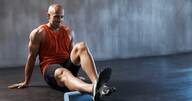
Injury Prevention in Pickleball:
What Makes a Good Warm-up Routine for Pickleball1. Cardiovascular Exercise / Muscle Activation (8-10 minutes):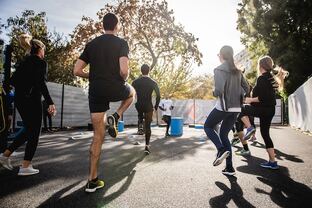 This phase helps elevate your body temperature and prepares your cardiovascular and muscular systems for the upcoming activity. Complete the below:
2. Paddle Warm-up (3-5 minutes): for shoulder injury preventionFinally, spend a few minutes doing light hitting with a partner or against a wall. This helps fine-tune your hand-eye coordination, familiarize yourself with the paddle, and mentally prepare for the game. 3. Additional Tips for the pickleball player to prevent injuries:
Understanding Pickleball Warm-UpDynamic warm-up Stretching for PickleballEngage in dynamic stretching exercises that mimic the movements involved in pickleball, such as arm circles, leg swings, and torso rotations, ensuring fluidity in motion and preventing strains. Specific Muscle Activation warm-up exercisesFocus on activating and priming muscles critical for pickleball maneuvers, including shoulder rotations, hip flexors, and lateral movements, optimizing your body's readiness for the game's demands. Warm-Up Drills for Enhanced Performance for pickleball injury preventionExplore a repertoire of warm-up drills curated by Physio Labs, designed to boost pickleball performance and reduce the risk of injuries. Agility and Footwork ExercisesElevate your footwork and agility through ladder drills, cone exercises, and shuttle runs, honing your responsiveness on the court. Cardiovascular Warm-UpIncorporate cardiovascular exercises like brisk walks, cycling, or light jogging to elevate heart rate gradually, preparing your body for the vigorous pickleball gameplay. Customized Warm-Up Plans at Physio LabsPhysio Labs prides itself on crafting personalized warm-up plans tailored to individual player needs, ensuring optimal preparation for Gold Coast's premier pickleball enthusiasts. Tailored Warm-Up Routines to play pickleballLeverage the expertise of Physio Labs' professionals who devise comprehensive warm-up routines, considering players' fitness levels and specific requirements. Injury Prevention StrategiesDiscover injury prevention strategies embedded within the warm-up routines, safeguarding players against common pickleball-related injuries Conclusion: Investing time in a proper warm-up routine is a small commitment that yields significant benefits. By incorporating cardiovascular exercise, dynamic stretching, and a paddle warm-up, you'll be well-prepared to showcase your skills on the pickleball court while minimizing the risk of injuries. So, the next time you step onto the court, remember: a good warm-up is your secret weapon for peak performance in pickleball. FAQs About Pickleball Warm-Up and Physiotherapy at Physio Labs1. How Should I Warm Up for Pickleball? Prepare effectively with dynamic movements like arm circles, leg swings, and torso rotations. Physio Labs suggests specific warm-up exercises tailored for pickleball's demands. 2. What Exercises Are Good for Pickleball? Benefit from agility drills, cardiovascular exercises, and sport-specific movements such as lateral shuffles. Physio Labs focuses on exercises promoting flexibility, endurance, and skill enhancement for improved performance. 3. What Exercises Prevent Pickleball Injuries? Discover muscle activation exercises, dynamic stretches, and warm-up routines to prevent common pickleball-related injuries. Physio Labs crafts personalized plans addressing individual needs. 4. How Do You Build Endurance for Pickleball? Gradually enhance endurance through cardiovascular exercises, footwork drills, and on-court practice recommended by Physio Labs. 5. What Are 3 Essential Pickleball Skills? Master hand-eye coordination, quick reflexes, and effective communication with your partner for successful play, as highlighted by Physio Labs. 6. Do You Need to Be Fit to Play Pickleball? While accommodating various fitness levels, Physio Labs recommends maintaining a basic fitness level for full enjoyment. Personalized warm-up routines cater to individual capabilities. 7. How Often Should You Play Pickleball? For a balanced experience, Physio Labs suggests playing 2-3 times a week to support skill development and overall fitness. 8. Is Pickleball Harder on Your Knees Than Tennis? While generally lower impact than tennis, proper warm-up and conditioning are vital to minimize knee stress, notes Physio Labs. 9. Can You Play Too Much Pickleball? Moderation in gameplay prevents overuse injuries. Physio Labs advises on rest periods and varying intensity for a healthy pickleball routine. 10. What Is the Most Common Pickleball Injury? Shoulder or elbow strain due to repetitive motions is a common injury. Physio Labs emphasizes warm-up and strengthening exercises to mitigate risks. 11. What Is Pickleball Etiquette? Follow etiquette guidelines emphasizing respect, communication, and rule adherence for a positive playing experience, according to Physio Labs. 12. What Are the Side Effects of Pickleball? When played responsibly, pickleball has positive effects. However, overexertion or improper technique may lead to muscle soreness or fatigue, as noted by Physio Labs. 13. Why Am I So Sore After Playing Pickleball? Post-game soreness can result from engaging unused muscles. Physio Labs recommends proper warm-up, cool-down, and stretching for relief. 14. Why Are My Legs So Sore After Pickleball? Dynamic movements in pickleball can cause leg soreness. Physio Labs suggests warm-up and targeted stretches for improved recovery. 15. Why Does My Body Hurt After Pickleball? General body soreness may indicate overexertion. Customized warm-up routines and recovery measures are crucial, according to Physio Labs. 16. Is It Common to Fall in Pickleball? While not common, maintaining balance through exercises and appropriate footwear minimizes the risk, advises Physio Labs. 17. Is Pickleball Good for Arthritis? Under proper guidance, pickleball can be suitable for arthritis sufferers. Consultation with a physiotherapist is recommended by Physio Labs. 18. Is Pickleball Bad for Your Back? Proper body mechanics and strengthening exercises protect the back during pickleball. A customized warm-up routine can address individual concerns, notes Physio Labs. 19. Is Pickleball Bad for the Neck? Maintaining proper posture and incorporating neck stretches in warm-ups minimize strain, as advised by Physio Labs. 20. Does Pickleball Damage Knees? Support knee health during pickleball with proper warm-up and conditioning, as recommended by Physio Labs. 21. Is Pickleball Bad for Your Hips? Physio Labs recommends hip-strengthening exercises in warm-ups to support hip health during pickleball play. 22. Is Pickleball Bad for Rotator Cuff? Protect the rotator cuff with strengthening exercises and proper warm-up, as highlighted by Physio Labs. 23. Is Pickleball Good for Knee Replacement? Under professional guidance, pickleball can be suitable post-knee replacement. Consultation with a healthcare professional is crucial, notes Physio Labs. 24. Why Do I Feel Dizzy When Playing Pickleball? Potential causes for dizziness include dehydration or overexertion. Adequate hydration and pacing can help mitigate this issue, advises Physio Labs. References
0 Comments
Sports Injury Rehab with Our Experienced PhysiosIntroduction Sports injuries can be debilitating and hinder an athlete's performance. However, with the right rehabilitation program and guidance from experienced physiotherapists, athletes can recover effectively and get back to their peak condition. At Physio Labs, we specialize in sports injury rehab and provide personalized treatment plans to address athletes' specific needs. Our clinic, located at www.physiolabs.com.au, offers a wide range of services including physiotherapy, exercise therapy, massage, and Pilates to aid in the recovery and rehabilitation process. In this article, we will explore the importance of sports injury rehab and how our experienced physios can help athletes regain their strength and performance. Stages of Sports Injury Rehabilitation in SportRehabilitation is a crucial process designed to optimize functioning and reduce disability in individuals with various health conditions, allowing them to regain independence and actively participate in daily activities.[3] When it comes to stages of rehabilitation, a comprehensive approach involving multiple interventions and professionals is essential for successful outcomes.
The first stage of rehabilitationbegins as early as possible after an injury or surgery. It focuses on minimizing the extent of the injury and reducing impairments and functional losses. Therapeutic exercises, which should be initiated without aggravating the injury, play a key role in this stage. Starting rehabilitation early can lead to a faster return to full activity and better overall recovery.[2] The second stageinvolves addressing the specific goals and needs of the patient. The rehabilitation plan is tailored to ensure the patient can return to the same activity and environment in which the injury occurred, with functional capacity equal to or better than before the injury. This stage may involve a multidisciplinary approach, with a team of healthcare professionals including physicians, physiotherapists, orthopedists, and psychologists, among others. Effective communication between the rehabilitation team, the patient, and coaches is crucial for a successful outcome.[2]
Exercise RehabilitationFinally, the third stage of rehabilitation focuses on preventing, correcting, or eliminating disabilities altogether. The ultimate goal is to help the individual regain full functional capacity and prevent future injuries. This stage often includes ongoing exercises, education on self-management strategies, and adaptations to the environment to better suit the individual's needs. By employing these strategies, rehabilitation aims to optimize the individual's overall well-being and facilitate their return to work, recreation, and other meaningful life roles.[3] It is important to note that rehabilitation is a complex and dynamic process, requiring a combination of scientific knowledge and creativity. It involves a balance between science and art to achieve the desired outcomes and support the patient's return to a normal life or excellence in their chosen sport.[1] By utilizing evidence-based approaches and following the principles of rehabilitation, healthcare professionals can guide patients through the stages of rehabilitation, promoting optimal recovery and functional improvement. Table of Contents
1. Understanding the Importance of Sports Injury RehabSports injury rehab is crucial for athletes to recover fully and regain their physical capabilities. It involves a comprehensive and structured approach to address the specific injury, promote healing, and restore strength, flexibility, and functionality. Engaging in proper rehab helps athletes minimize the risk of recurring injuries and enhances their overall performance on the field. 2. The Role of Physiotherapy in Sports Injury RehabilitationPhysiotherapy plays a pivotal role in sports injury rehab. Our experienced physiotherapists utilize their expertise to assess, diagnose, and treat various sports-related injuries. They employ a combination of manual techniques, therapeutic exercises, and modalities to optimize the healing process and facilitate the athlete's return to sport. 3. Customized Treatment Plans for Effective RecoveryAt Physio Labs, we understand that each athlete's injury and recovery journey are unique. Therefore, our physios create customized treatment plans tailored to individual needs. By considering factors such as the type and severity of the injury, the athlete's goals, and their specific sport requirements, our physios ensure a targeted approach that maximizes recovery potential. 4. Comprehensive Assessment and DiagnosisBefore initiating any treatment, our physios conduct a thorough assessment and diagnosis of the sports injury. They carefully evaluate the affected area, assess the athlete's range of motion, strength, and functional abilities, and identify any underlying issues contributing to the injury. This comprehensive approach helps in devising an effective treatment plan. 5. Techniques and Modalities Used in Sports Injury RehabOur experienced physios employ a wide range of techniques and modalities to aid in sports injury rehab. These may include joint mobilization, soft tissue manipulation, electrical stimulation, ultrasound therapy, and hot/cold therapy. These modalities help reduce pain, inflammation, and muscle tension while promoting tissue healing.
6. Exercise Therapy for Strength and ConditioningExercise therapy is a crucial component of sports injury rehab. Our physios design specific exercises that target the injured area, focusing on strengthening the surrounding muscles, improving flexibility, and enhancing overall conditioning. These exercises are progressive in nature, gradually increasing in intensity as the athlete progresses in their recovery. 7. Massage Therapy for Enhanced RecoveryMassage therapy is an effective complementary treatment in sports injury rehab. It aids in reducing muscle soreness, improving blood circulation, and accelerating the healing process. Our skilled massage therapists employ various techniques, such as deep tissue massage and trigger point therapy, to address muscle imbalances and promote relaxation. 8. Pilates for Core Stability and FlexibilityPilates is an excellent form of exercise for athletes undergoing sports injury rehab. It focuses on core stability, flexibility, and body awareness, which are essential for injury prevention and optimal performance. Our Pilates sessions are led by qualified instructors who tailor the exercises to suit each athlete's specific needs and goals. 9. Holistic Approach to Sports Injury RehabAt Physio Labs, we take a holistic approach to sports injury rehab. We understand that recovery encompasses not only physical healing but also mental and emotional well-being. Our physios provide guidance and support throughout the rehab process, addressing any concerns or challenges athletes may face and ensuring a comprehensive recovery experience. 10. Collaborative Care with Other Healthcare ProfessionalsIn complex sports injury cases, collaboration with other healthcare professionals is vital. Our experienced physios work closely with orthopedic specialists, sports physicians, and other relevant professionals to ensure a multidisciplinary approach. This collaboration ensures that athletes receive comprehensive care and the best possible outcomes. 11. Tracking Progress and Monitoring ResultsTracking progress and monitoring results are essential in sports injury rehab. Our physios regularly assess the athlete's improvements, adjust treatment plans accordingly, and set new goals as milestones are achieved. This ongoing evaluation helps athletes stay motivated and provides valuable feedback on their recovery journey. 12. Preventive Strategies for Future Injury PreventionPreventing future injuries is a crucial aspect of sports injury rehab. Our physios educate athletes on proper warm-up routines, stretching techniques, and injury prevention strategies specific to their sport. By implementing these preventive measures, athletes can minimize the risk of re-injury and maintain optimal performance in the long run. 13. Tips for a Successful Sports Injury Rehab Journey
14. Testimonials from Satisfied Athletes"I suffered a severe ankle sprain during a soccer match, and I thought my season was over. Thanks to the dedicated physios at Physio Labs, I was able to recover quickly and get back on the field stronger than ever." - John, Soccer Player "The personalized treatment plan and attention to detail by the physios at Physio Labs made all the difference in my recovery from a shoulder injury. I highly recommend their services to any athlete in need." - Sarah, Swimmer 15. ConclusionSports injury rehab is a critical component of an athlete's journey toward recovery and optimal performance. At Physio Labs, our experienced physios provide comprehensive and personalized treatment plans to help athletes overcome their injuries and regain their strength. With a holistic approach, state-of-the-art techniques, and collaborative care, we are committed to supporting athletes throughout their sports injury rehab journey. Don't let a sports injury hold you back. Contact us today at www.physiolabs.com.au to schedule an appointment and start your path to recovery. FAQs (Frequently AskedQuestions)1. How long does sports injury rehab typically take? The duration of sports injury rehab varies depending on the type and severity of the injury, as well as individual factors. Mild injuries may require a few weeks of rehab, while more complex cases can take several months. It's important to follow the guidance of your physiotherapist and be patient throughout the recovery process. 2. Can I continue training while undergoing sports injury rehab? In most cases, your physiotherapist will provide specific guidelines regarding training during rehab. It's essential to follow these recommendations to prevent further injury or hinder the healing process. Your physiotherapist may suggest modified exercises or alternative training methods that won't exacerbate your injury. 3. Will I regain full strength and functionality after sports injury rehab? Sports injury rehab aims to restore strength, flexibility, and functionality as much as possible. However, the extent of recovery may vary depending on the nature of the injury and individual factors. Your physiotherapist will work with you to set realistic goals and optimize your recovery potential. 4. How can I prevent sports injuries in the future? Preventing sports injuries involves several strategies, including proper warm-up and cool-down routines, regular stretching, wearing appropriate protective gear, maintaining good physical conditioning, and listening to your body's signals of fatigue or pain. Your physiotherapist can provide specific injury prevention advice based on your sport and individual needs. 5. Does insurance cover sports injury rehab? Insurance coverage for sports injury rehab varies depending on your insurance provider and policy. It's advisable to contact your insurance company to understand the coverage details and any requirements or limitations. At Physio Labs, we accept most major insurance providers and can assist you in navigating the insurance process.
These outbound links will provide readers with additional authoritative and trustworthy sources to further explore the topic of sports injury rehab and gain a deeper understanding of the subject matter. References: Pilates for Back Pain: Relieve and StrengthenBack pain is a common ailment that affects people of all ages and can significantly impact their quality of life. If you're looking for an effective way to relieve and strengthen your back, Pilates can be a great option. Pilates exercises are known for their ability to strengthen the core and promote good alignment, while also providing gentle stretches for tight back muscles. In this article, we will explore how Pilates can help alleviate back pain and improve overall back health. Table of Contents
1. Introduction to PilatesPilates is a form of exercise that focuses on core strength, flexibility, and overall body awareness. It was developed by Joseph Pilates in the early 20th century and has gained popularity for its ability to improve posture, balance, and muscle tone. Pilates exercises are performed on a mat or with specialized equipment such as a reformer. 2. Understanding Back PainBack pain can have various causes, including muscle strain, poor posture, herniated discs, or underlying medical conditions. It can range from mild discomfort to severe pain, affecting daily activities and mobility. Seeking medical advice is crucial to determine the cause and appropriate treatment for your specific condition. 3. How Pilates Can Help Relieve Back PainPilates exercises can help alleviate back pain by strengthening the core muscles, improving flexibility, and promoting proper alignment. Here are some Pilates exercises specifically beneficial for back pain relief: Pelvic Tilt to Pelvic CurlThe pelvic tilt exercise is often recommended for individuals with back pain, particularly in the lower back. It focuses on engaging the abdominal muscles and lengthening the lower back. Start by lying on your back with knees bent and feet flat on the floor. Perform a pelvic tilt by engaging your abs and pressing your lower back into the mat. Progress to a pelvic curl by lifting the hips off the floor, creating a bridge-like position. Repeat these movements mindfully, focusing on breath and proper form. Chest LiftWeak abdominal muscles can contribute to back pain. The chest lift exercise targets the abdominal muscles while maintaining proper alignment. Lie on your back with knees bent and feet flat on the floor. With hands supporting the back of your head, lift your upper body, engaging the abs and avoiding neck strain. Perform this exercise with control and avoid using momentum. Spine Stretch ForwardThe spine stretch forward exercise helps improve spinal mobility and stretches the back muscles. Sit upright with legs extended in front of you, hip-width apart. Inhale to lengthen your spine, then exhale as you reach forward, aiming to touch your toes or shins. Imagine elongating your spine with each breath and maintain proper alignment throughout the movement. Swan DiveThe swan dive exercise strengthens the muscles in the upper and middle back, promoting better posture. Lie on your stomach with legs extended and hands positioned by your shoulders. Inhale to lift your upper body off the mat, arching your spine while keeping your pelvis grounded. Exhale as you return to the starting position. Focus on lengthening the spine and opening the chest during the movement. Single Leg KickThe single leg kick exercise targets the lower back, glutes, and hamstrings, promoting strength and stability. Lie on your stomach with legs extended and hands positioned under your forehead. Alternate bending one knee at a time towards your glutes, then kick the leg towards the ceiling while engaging the glutes. Maintain proper alignment and avoid excessive strain on the lower back. (Note: This is a sample outline. Please continue writing the article based on the given headings and subheadings.) 4. Benefits of Pilates for Back PainPilates offers several benefits for individuals experiencing back pain. These include:
5. Tips for Practicing Pilates SafelyWhen practicing Pilates, it's important to keep the following tips in mind to ensure safety and effectiveness:
6. ConclusionPilates can be a valuable tool for relieving and strengthening the back. By incorporating Pilates exercises into your routine, you can improve core strength, flexibility, and overall back health. Remember to consult with a healthcare professional before starting any exercise program, especially if you have existing back pain or medical conditions. Start with the exercises mentioned in this article and gradually progress as you build strength and confidence. 7. Frequently Asked Questions (FAQs)
Incorporating Pilates exercises into your routine can help alleviate back pain, strengthen your core, and improve overall back health. Remember to practice mindfully, listen to your body, and consult with a healthcare professional if you have any concerns. Start your Pilates journey today and experience the benefits for yourself. The Pilates Reformer: A Comprehensive GuideThe Pilates Reformer is a versatile and effective piece of exercise equipment that has gained immense popularity over the years. Invented by Joseph Pilates, it consists of a bed-like frame with a flat platform called the carriage, which moves back and forth on wheels within the frame. The carriage is attached to one end of the reformer by a set of springs, providing varying levels of resistance as it is pushed or pulled along the frame. How a Reformer Is UsedThe reformer offers a wide variety of exercises that promote strength, flexibility, balance, and overall body conditioning. These exercises involve pushing or pulling the carriage or holding it steady during an exercise as it is pulled on by the springs. One of the reformer's standout features is its versatility, allowing for exercises in various positions, including lying down, sitting, standing, pulling the straps, pushing the footbar, and many other variations. Benefits of Using a Pilates ReformerThe Pilates Reformer provides numerous benefits, including:
|
| Back Pain is commonly reported as pain and/or stiffness in the low back and in sever cases referred pain to your buttock and down your leg. It is commonly reported getting worse when
Substantial evidence exists supporting the |
“direct costs were lower for physiotherapy”
"69% recurrence in the first 12 months"
Call Physio Labs to
- increase your strength and flexibility
- decrease your pain
- Be able to exercise again
Myths
- ‘I'll be stuck with this pain forever’ - 90% of lower back pain cases recover within 6-12 weeks and less than 10% experience pain for >6 months
- ‘I need to get a scan on my back right away’ - Radiographic abnormalities are often not responsible for symptoms. After the age of 50, nearly two-thirds of normal individuals show degenerative changes. A scan is not necessary before commencing treatment of back pain.
- ‘I'm going to need surgery on my back’ – Only 1% of lower back pain cases require surgery.
- ‘I can't move or I will make my injury worse’ - Research has proven that bedrest or avoiding movement is more harmful then continuing normal movement as tolerated.
- ‘My back is out of place’- The spine is very stable and it is essentially impossible for a disc, bone or muscle to 'slip’ out of place. Research has also found minimal correlation between abnormal spinal alignment and pain.
Facts
- A higher body weight increases the risk of lower back pain - An increased BMI places higher compression forces through the spine, increasing the risk of injury.
- Exercise helps reduce and prevent lower back pain - Studies have found that regular, targeted exercise can reduce back pain and associated disability by more than 50%.
- Physiotherapists can diagnose and treat back pain without referral from a doctor - While most people experiencing back pain visit their doctor initially, referral is not required for physiotherapists to accurately diagnose and treat lower back pain.
- Prolonged sitting increases risk of lower back pain - Similar to a high BMI, sitting results in increased compression forces through the spine (up to 60% increase), which over time may increase the risk of disc injury
- Pain medications are not essential to get rid of back pain - While pain medications can be useful in the short term to manage pain, they are not a good long-term solution and prolonged use may have harmful effects on the body.
O'Sullivan PB, Caneiro J, O'Sullivan K, et al. (2020). Back to basics: 10 facts every person should know about back pain. British Journal of Sports Medicine, 54:698-699.
News
We have even more free info! Scroll down to the bottom and filter results by 'Categories'
Archives
November 2023
July 2023
January 2023
November 2022
December 2021
November 2021
October 2021
September 2021
April 2020
March 2020
February 2020
January 2020
Categories
All
Ankle
Core
Exercise
Feet
Hamstrings
Injury Information
Knees
Low Back Pain
Physio Graduates
Planks
Posture
Running
Sports

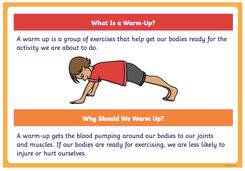
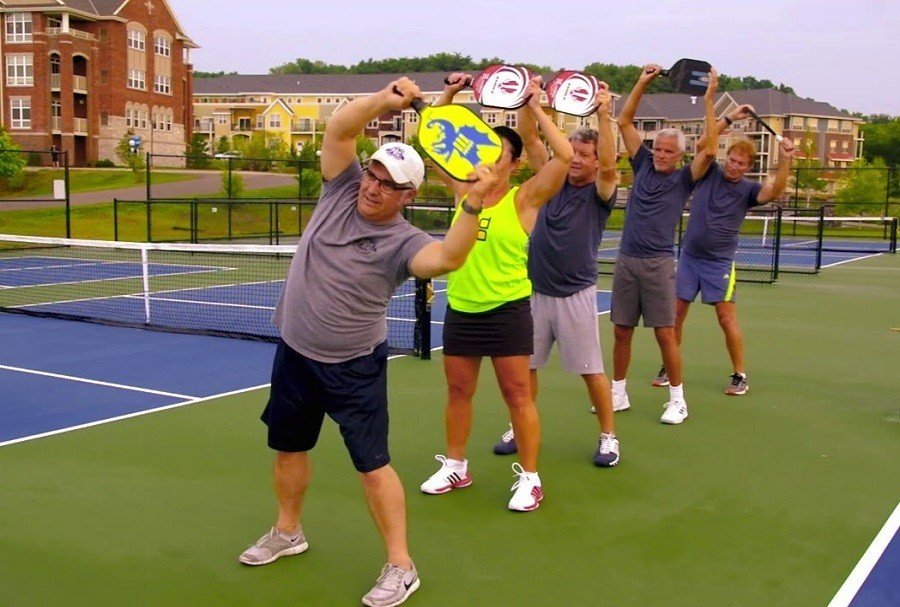
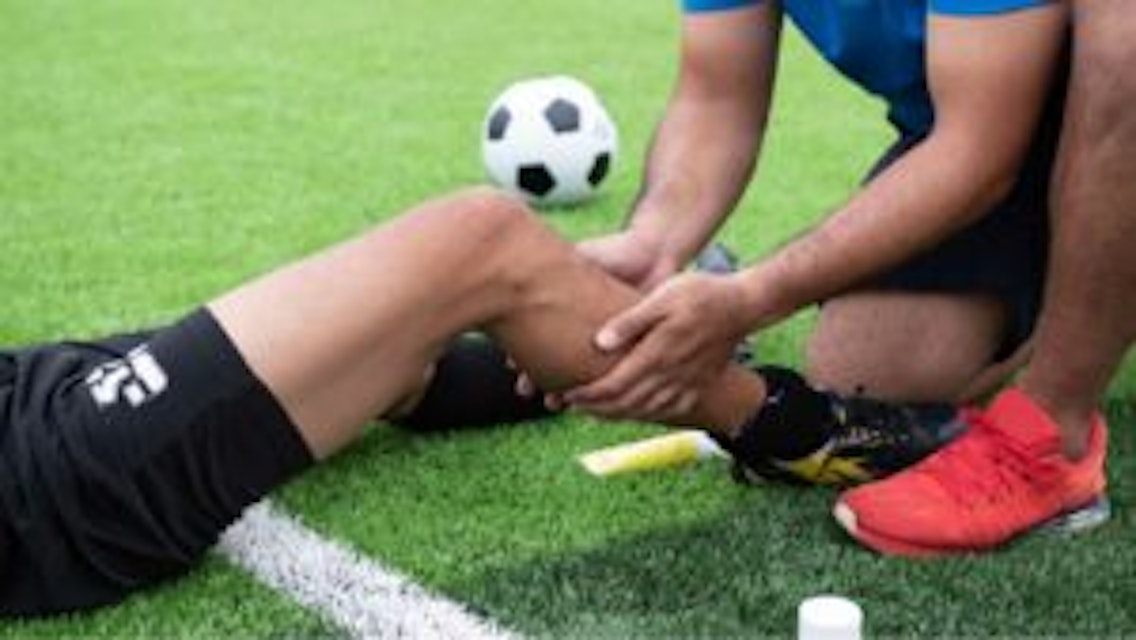
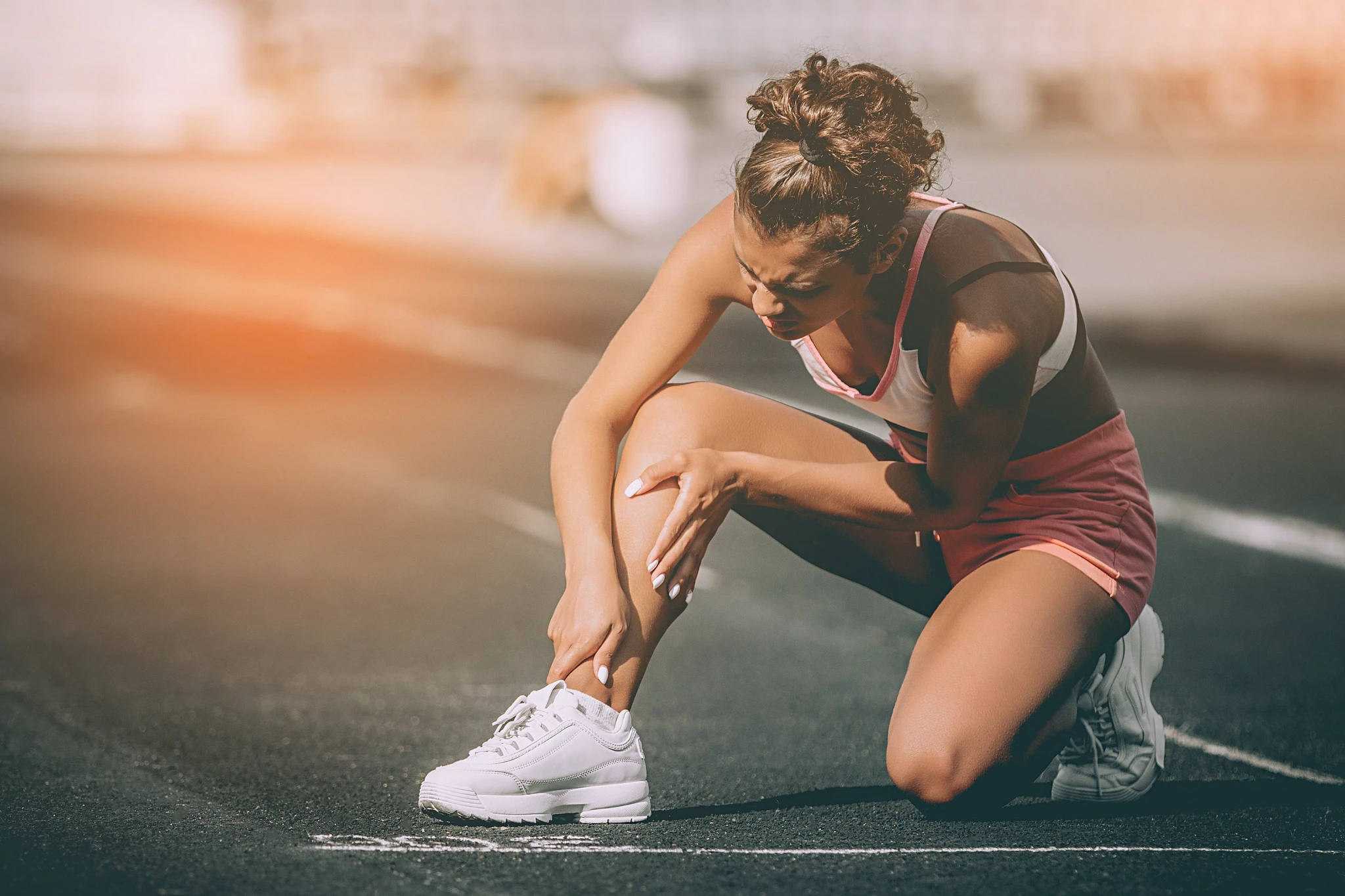
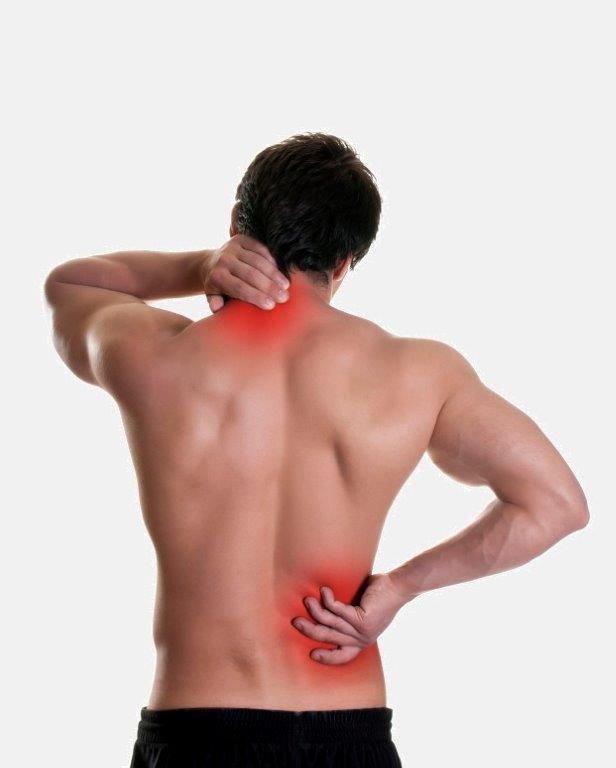
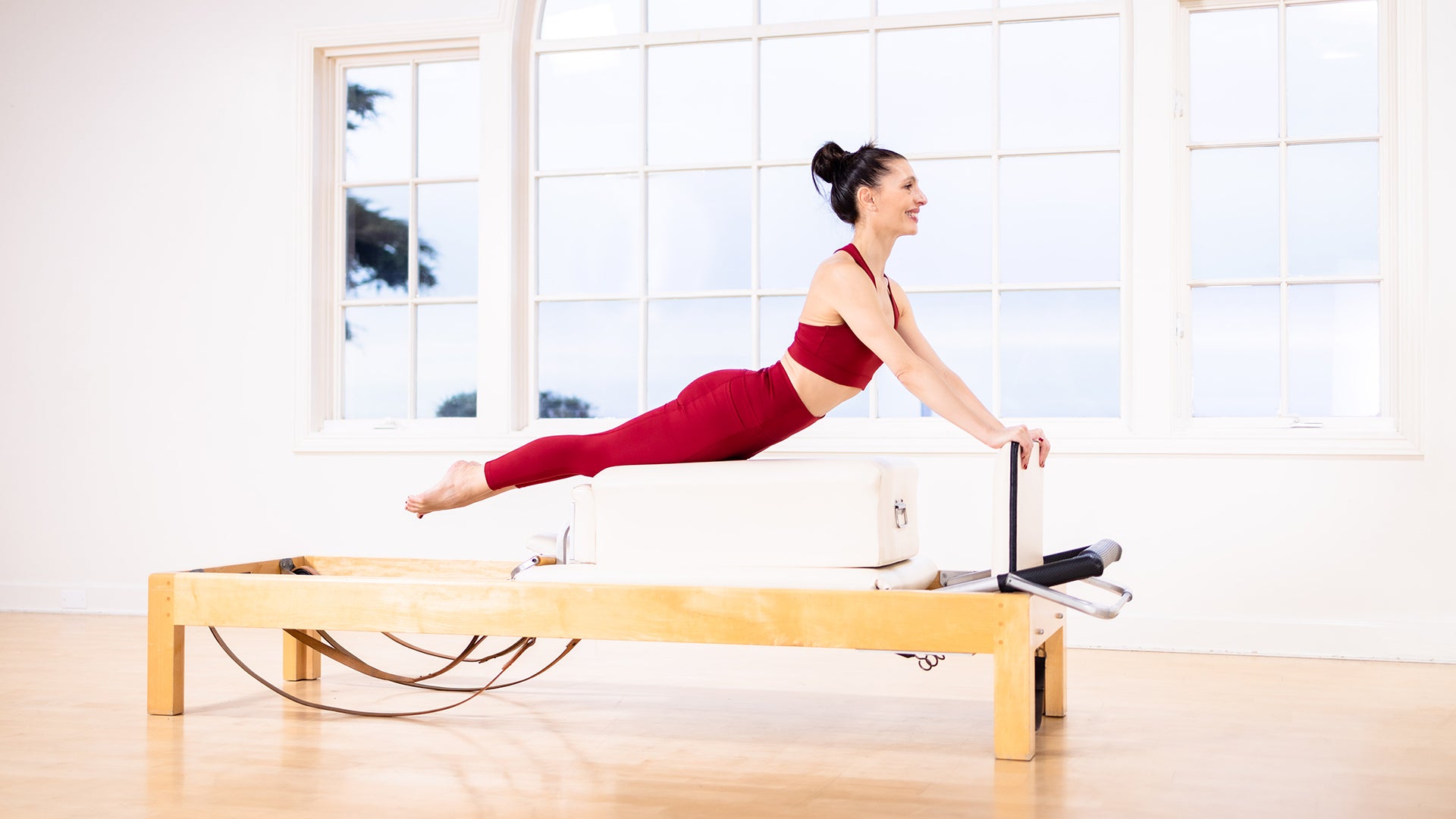

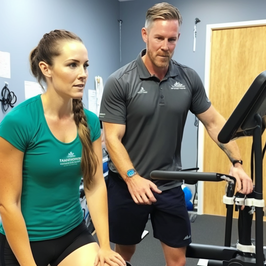
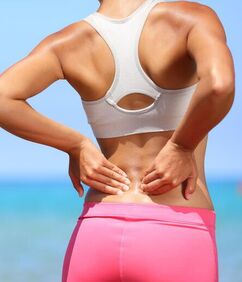
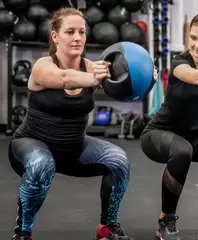


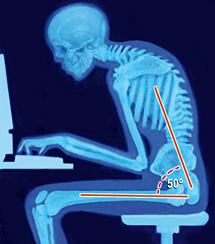
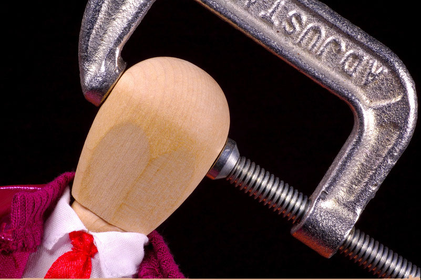
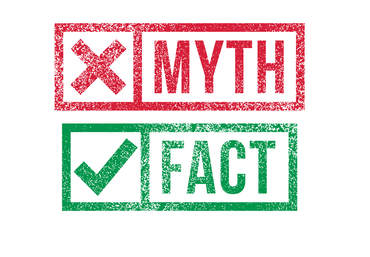
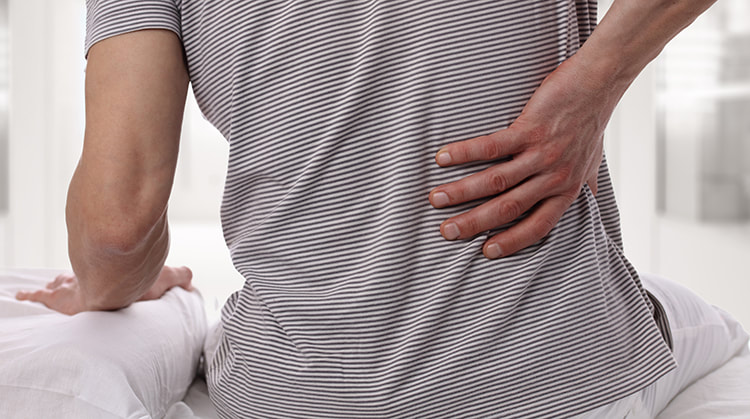
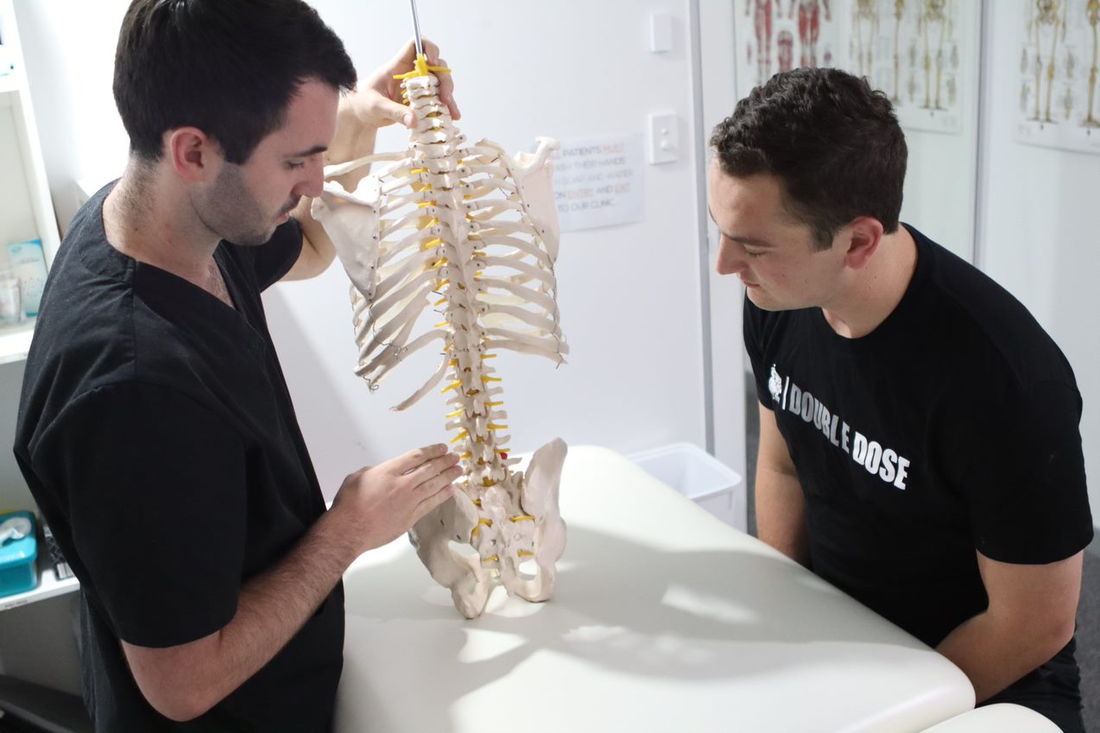
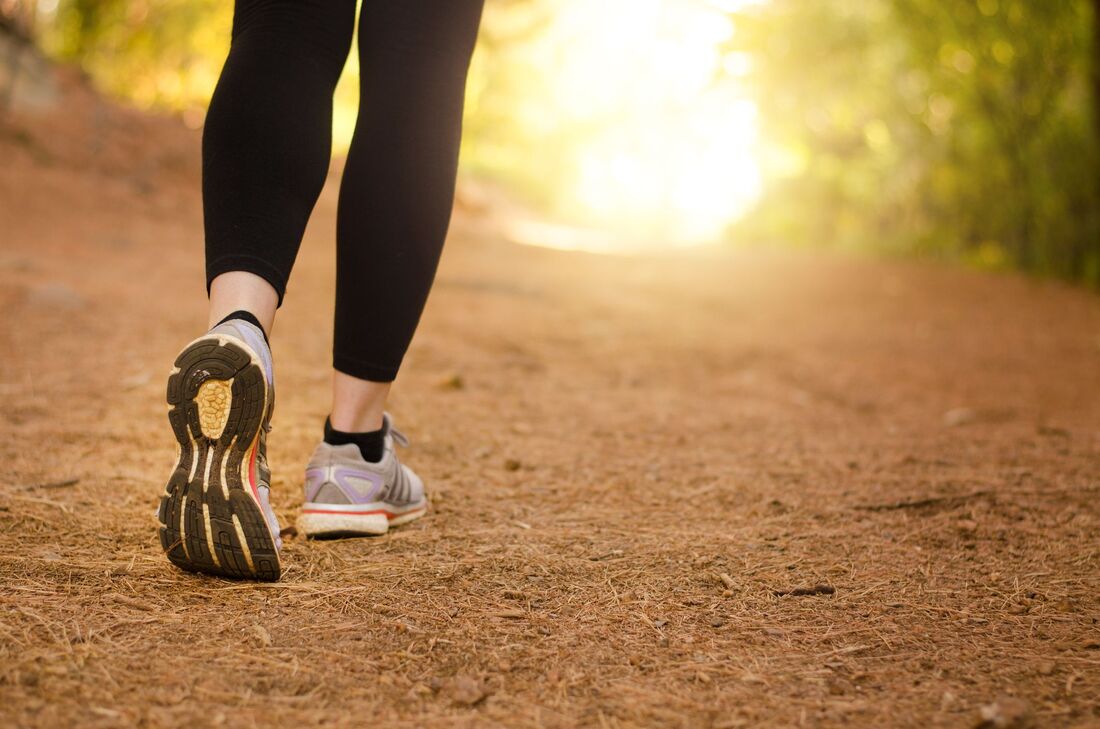
 RSS Feed
RSS Feed

